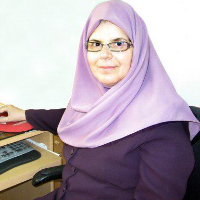Influential environmental components in promoting children's motor intelligence; Case study: Shadi Park and Noshirvani Park in Babol
Childhood is the most important period of human life. Children interact with their surroundings to develop and flourish their physical and mental abilities. Today, trying to provide suitable environments for children has become one of the major concerns of architects. Increased insecurity in cities, increased construction and housing, and a decrease in houses with yards have reduced play space and ultimately the mobility of children. In recent years, a large part of children's entertainment and leisure time is spent watching TV and computer games, causing a change in children's play space and mobility, and ultimately reducing their mobility. With the outbreak of Coronavirus, followed by the closure of schools and the reduction of children in contact with each other, the construction of urban spaces for children according to the needs and creativity of children, not only for mobility but also for social life. And it leads to learning many useful activities and discovering their creativity. This study aims to investigate and identify the effective environmental components, including space construction, in promoting children's motor intelligence and prioritizing environmental components to improve children's motor intelligence.
This research has been done by descriptive-analytical method; First, articles and books related to motor intelligence have been studied, then by observing the behavior of children in summer and autumn at different hours of the day, two movements of children have been studied from two parks of Shadi park and Noshirvani park in Babol. Due to the prevalence of corona during the research and the absence of children in outdoor play areas, access to children was low, so the frequency of research and observation of children's behavior was higher. The validity of the research was based on the Trinity technique. In such a way, two experts with expertise in child psychology and experience working with children, after completing the observations and analyzing the data, have checked the correctness of the method and results.
The research results in these two parks show that all children have motor intelligence and can be improved. Children have motor intelligence and the ability to work with objects. They use and move their limbs when playing, talking, or doing any activity. They perform very well in theatrical works and sports. They are good at opening and closing parts of an object and perform well in balanced games.
According to the obtained components of this intelligence, which include spaces with sequences, groups, spaces that arouse children's curiosity, and spaces that increase balance and movement in children, children's motor intelligence can be improved. Since the environment has a great impact on promoting children's motor intelligence, designing and constructing urban play spaces and providing a school environment, teaching in different ways (such as performing plays and conducting practical experiments to better understand the lessons) and games in school have a significant effect on promoting children's motor intelligence.
-
Identifying the Influencing Elements on the Citizens' Cognitive Map on Strengthening the Sense of Place (Case Study: Aliqapu Ardabil Pedestrian Street)
Nasrin Mohammadi, *
Journal of Urban Structure and Function Studies, -
Effective of Generative Learning on the Based Load Cognitive Pattern on Math Memorization 7th Grade Students
Soheila Hashemi*, Seyyed Abolqasem Seyedan, , Ali Asghar Firouzjaeian
Journal of research On Issues of Education, -
The Effectiveness of Direct Current Transcranial Brain Stimulation and Cognitive Rehabilitation on Working Memory and Reading Efficacy of Students with Dyslexia
Hamed Sarhangpour*, , Vahid Nejati, Soheila Hashemi
Quarterly Journal of Child Mental Health, -
The Influence of Ritualistic Landscapes on Public Perceptions for Advancing TourismThe Case of the Haft-Cheshmeh Bridge and the Nousti Ceremony in Ardabil
Nasrin Mohammadi Irloo, *
Tourism of Culture Journal,



